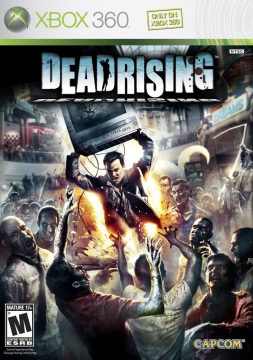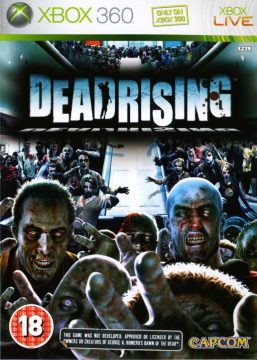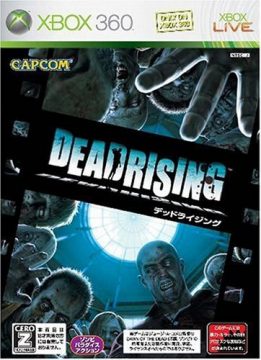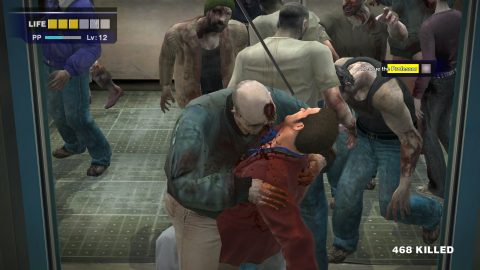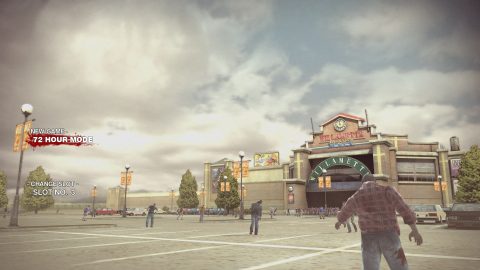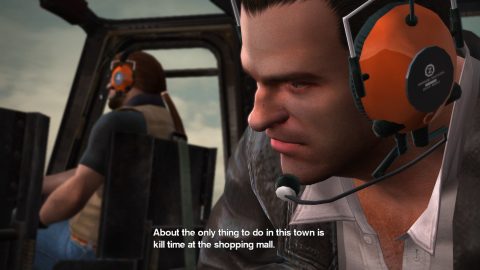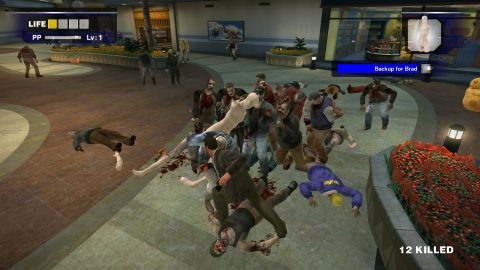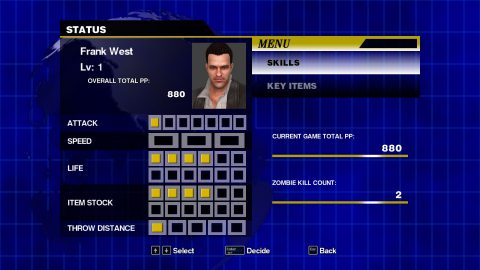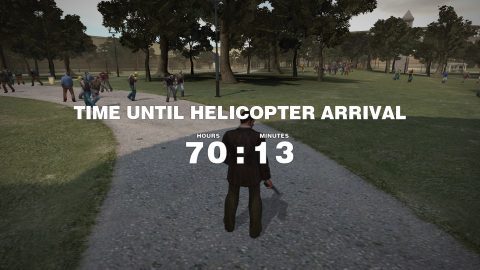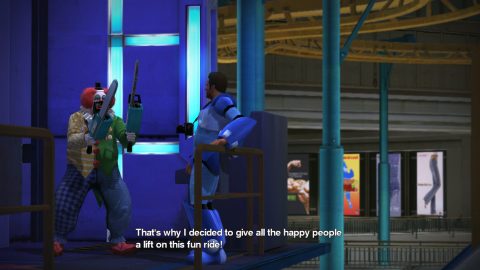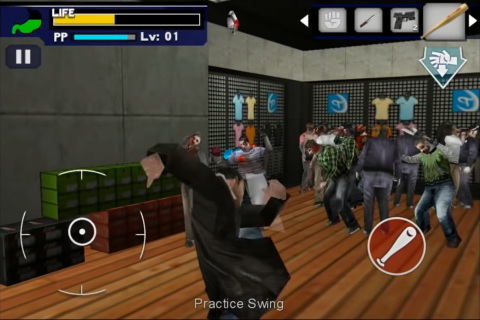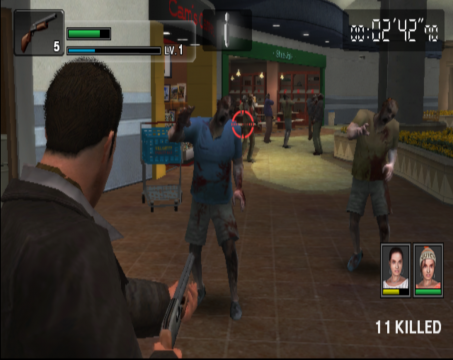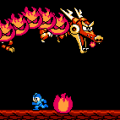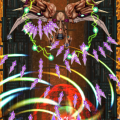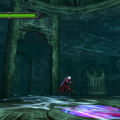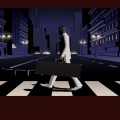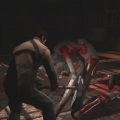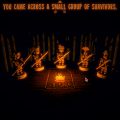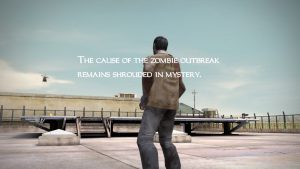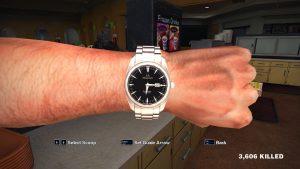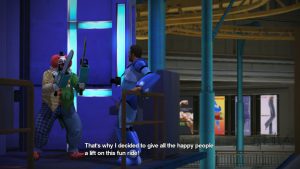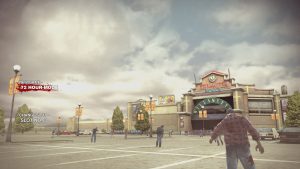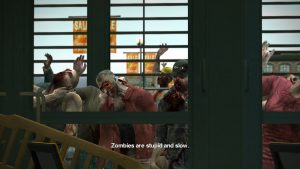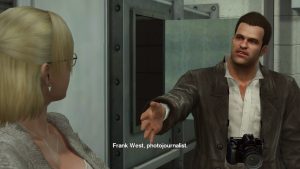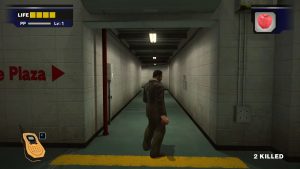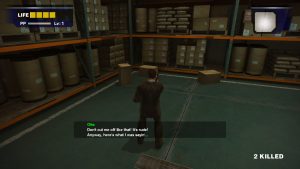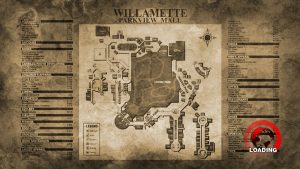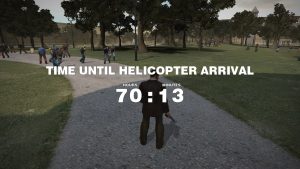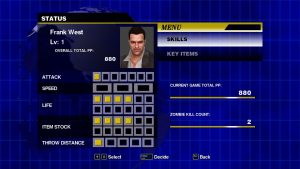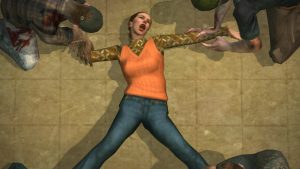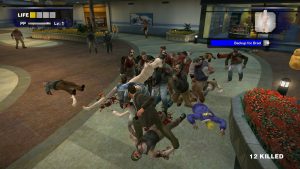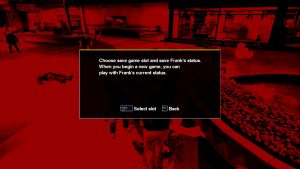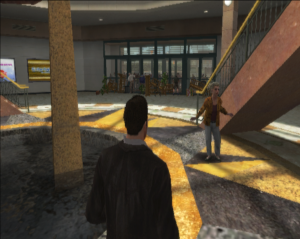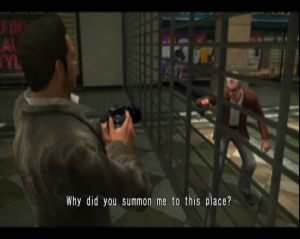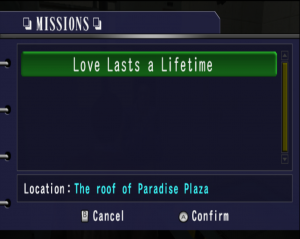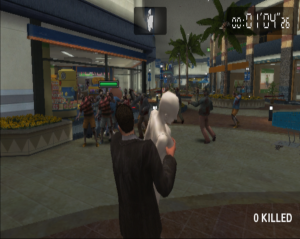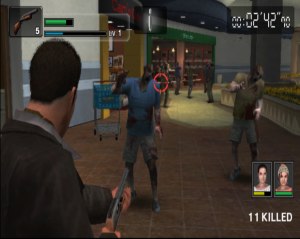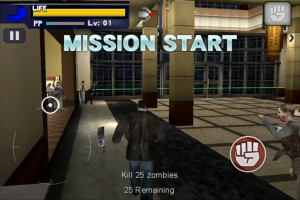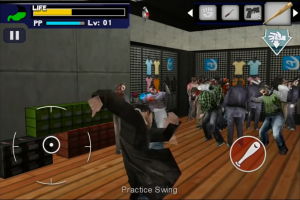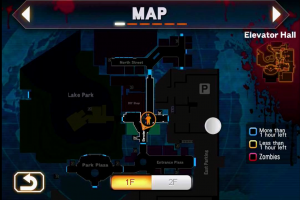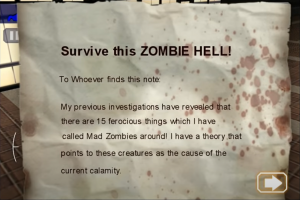In 2006, Capcom released Dead Rising, an open world, action-adventure, survival horror game unlike any other for the time. Where previous generations of horror games had found success from limitation and restraint, this game aimed its sights on excess and all the excitability of a new console generation. Reports from reviews touted up to 800 zombies on screen at once, and its bloody commercials promised players, “Anything is a weapon”. Eschewing many common horror conventions in favor of something more experimentally sandboxy, nonlinear, comedic, and fun, Dead Rising didn’t always know what it wanted to be, but was its own fantastic, if uneven and off base wonderland for zombie fans and early achievement completionists alike.
Fun to note as well, is that the game’s demo became the second highest downloaded demo on the Xbox 360’s marketplace; years after its release it would see a lawsuit filed, and dismissed, from the group who holds the rights to Romero’s Dawn of the Dead; and, despite becoming one of the console’s earliest claims to fame and being re-branded as a Platinum hit, the game was never blessed with a greenlight from Capcom for most of its development.
In part, because deciding how the genre would grow has been a difficult problem to solve since the first Resident Evil succeeded so well financially in 1996 that everything afterwards had to either be explicitly like it or not like it. Silent Hill de-emphasized combat in 1999, Fatal Frame made taking pictures your only defense in 2001, and Eternal Darkness began playing with the fourth wall and player’s sanity in 2002,but as the years went on, more and more “Americanized” takes on the genre (like The Thing in 2002 and Doom 3 in 2004, where action became a greater focus and gunplay was a favorable way to soften up the scares) were saturating the market. The industry as a whole, it would seem, was having difficulty stabilizing in the new millennium because of the ever increasing expense, time, and risk of AAA development.
Below the surface, early 2000s Capcom was fairing no better and in a precarious position financially. While their franchises were doing well critically, their broader titles were failing to make a splash internationally. No longer could a game only do well at home, and the chances entirely new IP getting approved were incredibly slim. When Resident Evil 4 landed, however, its success caugh tthe attention of another developer at Capcom. Keiji Inafune, who began his work as an artist and illustrator on the original Street Fighter and Mega Man, had been originally tasked with creating a sequel to 2005’s Shadow of Rome (which was meant to be a more internationally grabbing title). However, once the sequel fell through, Inafune pushed for a shift in focus and direction for the project, in no small part, because of Resident Evil 4’s negative influence on him.
In truth, Inafune felt the zombies shouldn’t have been made fast, and, with faith that the slow moving zombie still had plenty of potential, saw fit in using the original George Romero films as further inspiration. Blending the frightful with the comedic would help differentiate the project from Resident Evil, but being “not like” Resident Evil would also becomea large part of what shaped their project out of what was originally only a tech demo for the studios in-development MT Framework Engine (with Dead Rising and Lost Planet actually being developed simultaneously, and more as a means to show off the engine than to ship as standalone as titles). Before finally releasing in 2006, Dead rising would undergo multiple internal face lifts and restarts to help it find its focus, but, the end result was a polished game truly bursting at the seams with ideas.
Now, on the game itself…
Dead Rising puts players in the “average joe” shoes of Frank West, middle aged every man and photojournalist. Frank hires a helicopter to fly him into a quarantine zone and get the big scoop on what might be happening in the game’s fictional Colorado town. Thankfully, the best place to land is on the helipad of the town’s major shopping mall. After telling the pilot to be back in 72 hours, it’s not long before survivors inside the mall lose control, zombies get in, and it’s up to Frank to race against the clock and chase down the full story on the outbreak, or – well, do whatever he wants.
From the hub-room style “safe house”, the player can venture out into the mall at their leisure. Key to the game’s semi-nonlinear approach, instead of being an elite officer heading in to “get the job done”, players are, in a lot of ways, just another person trying to survive. Inafune believed that a “photojournalist” would give players an inherent flexibility in how they want to play the game; by caring about the case and solving the story, or in deciding to be a self interested journalist out for their own means. Deciding to save the day or anyone but yourself actually feels like micro / macro herculean tasks because, at the start of the game, players are thrown into an unfamiliar environment with only four “squares” of health and four spaces for inventory.
Thankfully though, for most of the game, the only enemy in the mall is the prototypical, “dumb”, “slow moving” zombie, but a lot of work has been done in making the zombies collectively act in familiar “horde” mentality (by either ignoring Frank, or slowly grouping, circling, and lunging when the player least expects it), so it’s easy to feel safe and empowered early on and when with an impractical and impromptu collection of weapons, yet very unsafe as soon you’re low on health, lost or far from safety, and down to your last, almost broken weapon.
The game plays like an aged, bare bones beat-em-up (not unlike a more modern Yakuza game in a lot of ways), and lacks a lot of modern quality of life conveniences (Frank can’t “sprint”, duck behind walls or cover when getting shot at, and dodge rolling is an unlocked skill), but plenty of these systems hadn’t been made or mass adopted at the time. At its core, fighting zombies is simple and, if bare handed, Frank can pretty much only punch until he unlocks more useful skills like jump kicking or karate chopping. The real draw though is the wide array of objects and weapons for Frank to arm himself with. Players can freely pick up a large variety of objects off the ground (everything from tables and umbrellas to guitars, soccer balls, cleavers, frying pans, etc), and it effectively turns every shop in the mall into a weapon store, and every dire situation into an impromptu loot-a-thon.
The strategy guide lists 141 weapons (and doesn’t even include vehicles or modes of conveyance like bicycles and skateboards), and arming yourself feeds right back into exploring, so, learning to do both for fun and with serious intent feels quite natural as players progress from running around aimlessly to trying to beat the game. There’s no randomization to the placement of objects and (aside from also being throwable) every object only has one “kind” of attack, so knowing what to grab and where turns into its own, moment to moment meta-game. Only a few weapons end up being really useful (although a lot of items are genuinely hilarious to use and play around with), but learning where everything is, and finding out how almost anything can be useful for a little while makes for a fun and unique experience.
In addition, an RPG leveling and progression system acts as a glue between all the games various systems. Players can earn more health, inventory space, and special moves as they play, and everything earns the player experience. Frank can, of course, just kill zombies, but alsotake photographs (which are awarded points and XP for their horror, brutality, silliness, or eroticism), save survivors (who you then have to escort back to the safe room), or track down and take out the game’s colorful cast of bosses as they show up at different times throughout the game.
Throughout the mall, Frank will have run ins with a variety of “Psychopaths” (people who have turned violent because of the outbreak) who vary in difficulty, but can all be fairly challenging early on. Fighting any boss with a gun (while without one) feels immediately broken and unfun due to their perfect aim, but running into all these characters is its own darkly comedic delight. Most fights also result in fancy weapon being left behind, so the game does a commendable job of trying to temper its challenge with appropriate amounts of reward.
The main plot inches along with one big event looming on the horizon at a time, but Frank can always check his watch to see when the next “case” begins, and will have an arrow guiding him to where it starts. Once it does, players will have to complete a few main objectives in a row (ranging from “go here”, to boss fight), but might have anywhere from two to twelve hours to kill until then (each in-game hour is only five minutes). If the player fails or ignores any of these main missions however, they have the option to continue playing the 72 hours out (as they can “escape” on the last day without getting all the info on what’s happening with the outbreak). Players will also get calls from the safe-room with updates on where side quests can be found throughout the mall, and, in a nice touch of on-ramping, more calls come in on subsequent playthroughs, so there’s always a fair amount to find on your own before the game bogs you down with too much of what’s out there waiting for you.
This gives the game a great deal of flexibility (in terms of letting the player decide how seriously they want to play the game), but its real mastery is in how it makes use of having a lot of time on the clock or a little. At first, there’s too much, and everywhere in the mall feels exciting and open, packed to the brim with items and opportunity. Over time though, things begin to feel cramped by too many bottlenecks and choke points, everywhere is too far and filled with too many useless distractions, and eventually, the game will slowly ramp up the tension as effectively as it empowered its player to explore, be brave, and take risks. The fun of the mall draws you in early on, while the drama and chaos is the quicksand sinking you in over your head.
Eventually, players will have to make some hard decisions about what you can afford to do with the time, weapons, and health you have, when you have it. Even though the game’s story and tone can shift wildly from dramatic and graphic to silly and lighthearted, the plot keeps twisting, the mall is packed to the brim with characters and charm, and comes with an edge of commentary not unlike the Romero films the game was inspired by.
However, the game’s biggest pill to swallow might be one of its most divisive (yet ahead of its time) mechanics: restarting. As soon as Frank gets killed or fails the mainquest line, the game lets the player load from their save, or restart the entire game fresh with experience in tact. The idea of restarting with prior game knowledge and experience feels at home within the ever expanding Roguelike / Roguelite subgenre of indie games like Dead Cells from 2018 and Hades from 2020 Dead Rising actually got its ideas from its team members who had developed Breath of Fire: Dragon Quarter, but for the mid 2000s, this was a confusing concept for audiences at the time.
Other complaints were lobbed at the save system (originally, any save made overwrote all others, but has since been tweaked in subsequent releases to allow multiple save slots), unforgiving controls, and bad survivor AI. Some also found the game frustrating and empty, stressful and punishing, or just not easy to intuit, as, on a first playthrough, the player has little idea of what to do once able to roam about freely. Most would eventually run headlong into an immediate roadblock of a boss fight, or just not know everything there is to know about surviving (like picking up magazines to boost stats and toughen weapons or carrying around food for an emergency) to make it to through to the game’s ultimate, “good” ending. The idea was for players to get more out of the experience over time, but this also made some early bosses and situations feel entirely unbeatable the first time you run into them (with some players thinking the point was to reload saves and grinding experience, as opposed to maybe running away or returning after a restart or two).
However, those able to roll with the game’s more free-wheeling kind of abandon found the early sandbox experience rewarding and worthwhile. It’s a game that allows itself to feel silly and simple, while also being tough and terrifying, and as the Xbox 360 was the first system to adopt Achievements, Dead Rising came with ways to enjoy it short term (as an early sandbox game filled with toys to play around with) and over multiple playthroughs (with multiple outfits, weapons, and two more game modes to unlock as well).
Graphically, the game feels bright and well lit like the mall our players inhabit. Cutscenes do their best with zooms and shakes, but early lip sync and weird mouths and face textures on semi blocky bodies show some of the game’s age. There’s cheap motion blur, blood is just a texture map splashed on top of Frank, and there’s no complex lighting or particle effects modern gamers might’ve grown attached to, but the variety of animations and breadth of the game as a whole make it all worth seeing.
The music is a mix of perfectly in tune mall music (a winning effect from Romero’s films) with the occasional hard-rock / rock-rap tracks of the time showing up during boss fights or tense situations, and feels only a bit dated or unsuccessful in parts, as, on the whole, the heavy guitar riffs and amped up score gel well with the more explosive moments of life or death action throughout the game. One complaint about the sound, or its design more specifically, was the ringer from the player’s transceiver (which would ring, have to be answered, could be interrupted, and then would ring again), but the soundtrack has its standouts that have stayed stuck in players heads simply because of where and when the song was heard (“Gone Guru” being a track of particular note, as well, because it was repeated ad nauseam in the central area of the map until you defeated the psychopaths harassing you there).
Overall though, Dead Rising is an odd stew of horror and comedy, of self indulgent, free-roam frivolity and B horror movie wish fulfillment. It became popular at the time when “open world” was still a powerful and unfamiliar formula to be played with in your game (let alone a horror game), brand new franchises were becoming scarcer and scarcer, and still stands as a fun, worthwhile, and truly unique experience even if “the zombie” has seen it’s cultural resurgence come and go again, and “the zombie game” has been done another hundred times since.
Last to note as well is that Dead Rising would get both a spin-off and a remake, in addition to being ported to next gen consoles and packaged with two of its sequel games in 2016 (and without changing or losing anything from the original game in the process).
In 2008, Capcom released a mobile version of the game (with an IOS version coming in 2010). It’s no longer playable, but featured a redesigned mall, multiple playable characters, and touted a similar kind of third person camera, beat-em-up action. Zombies were easier to kill, hunger affects player’s health like in the original game’s infinity mode, and aside from the inclusion of daily quests and rescues, a new mechanic was added where players could ask their friends on social media to revive them (with their refusal causing them to appear as a zombie within their friend’s game). However, reviews ranged from above average to abysmal, with some impressed in the game’s ability to carry over the sandbox feel and story of the original, while others complained about the meaningless and tedious side quests and general lack of variety within the game.
In 2009 (and because of Resident Evil 4’s surprise financial success on the Wii despite being an M rated horror game), and instead of being ported, the game would get remade entirely for the Wii (and with the engine used to make RE4) with Dead Rising: Chop Till You Drop. It incorporated an over-the-shoulder camera and utilized the motion control system of the Wii Remote, but due to hardware limitations only 100 zombies could make it on screen at once, the graphics were reduced, and a great deal of the game was tweaked and redesigned. Free-roam and photography was dropped entirely (the game explaining Frank’s camera was damaged during the initial panic), and while the game uses the same world and cutscenes, the game sees Frank select missions via a list before racing against a running timer to finish (with players no longer being allowed to roam freely around the mall when on a mission).
In addition to the added motion controls, guns were redesigned entirely. Frank is given a gun to equip early on, and they work more like a sidearm that can be switched to and aimed without affecting what the player is holding in their hands as a weapon. Some praised the redesigned gun play for being more useful than its original incarnation and for how good it felt to aim with the Wii remote, but overall, the game received mixed to unfavorable reviews as most felt that the nonlinear, sandbox nature was a lot of the original game’s core appeal, and that the mission system hampered the overall story and its effectiveness.

